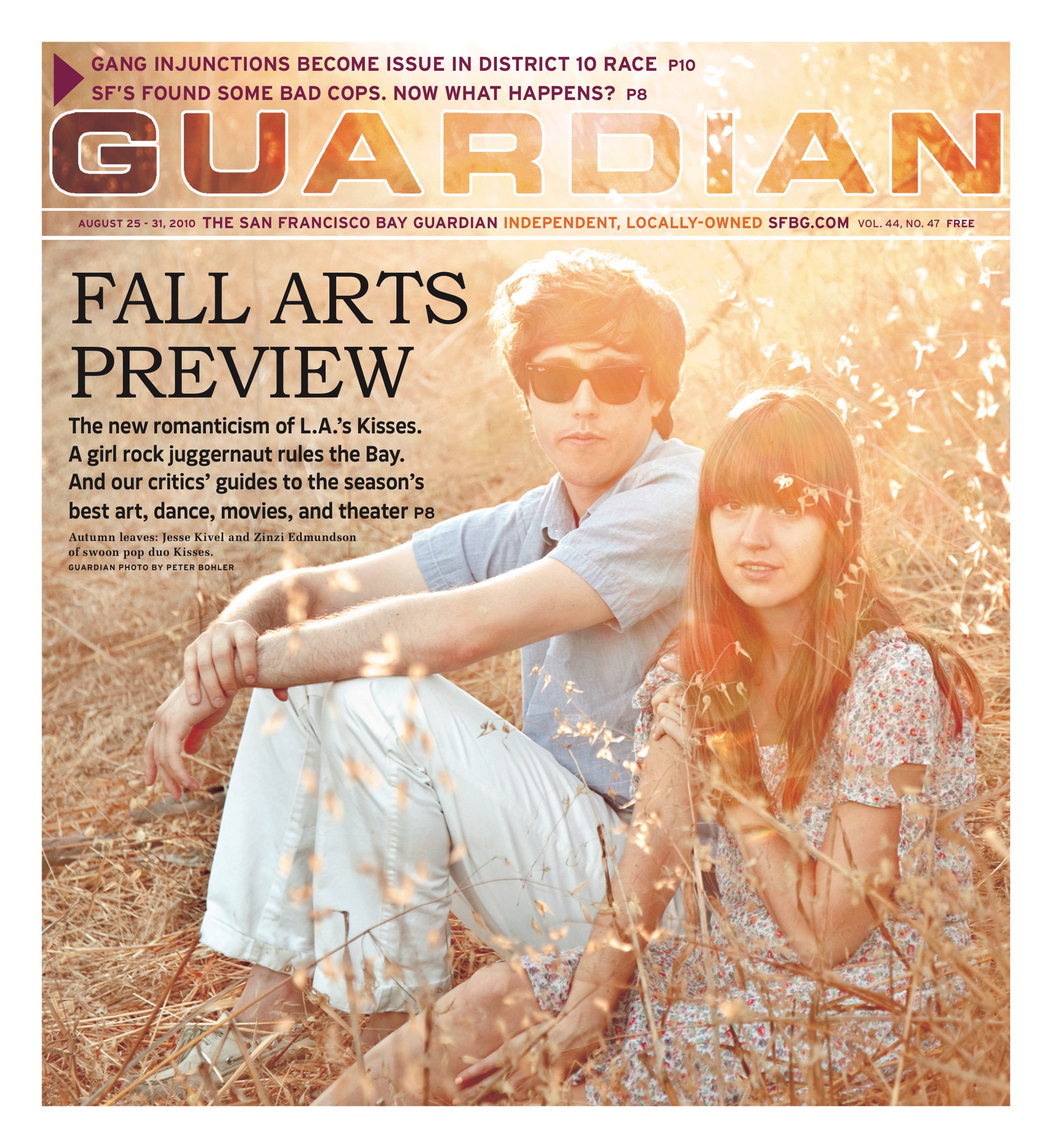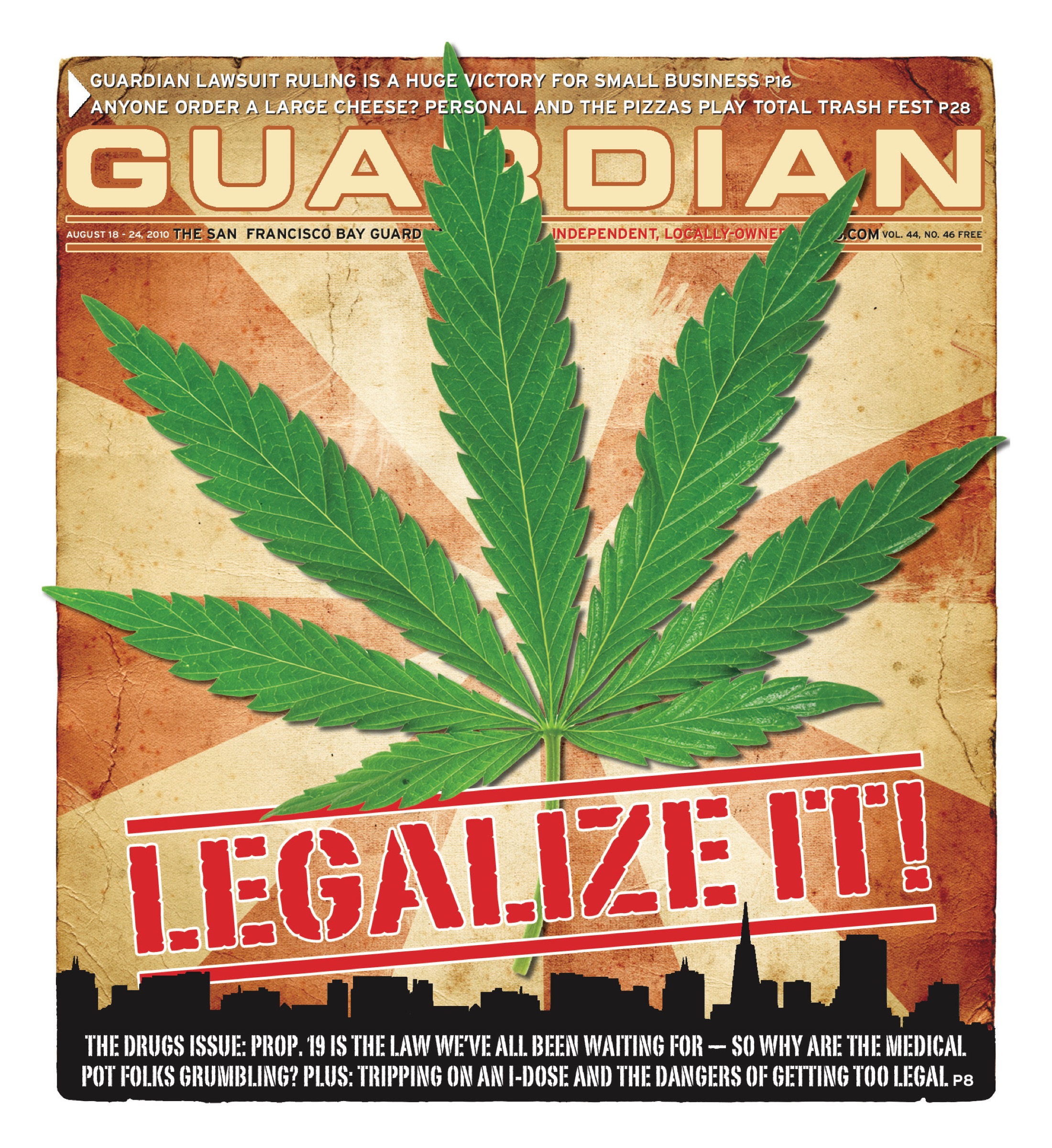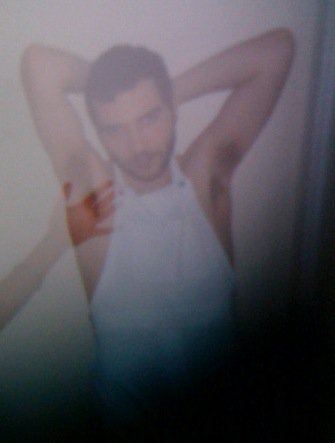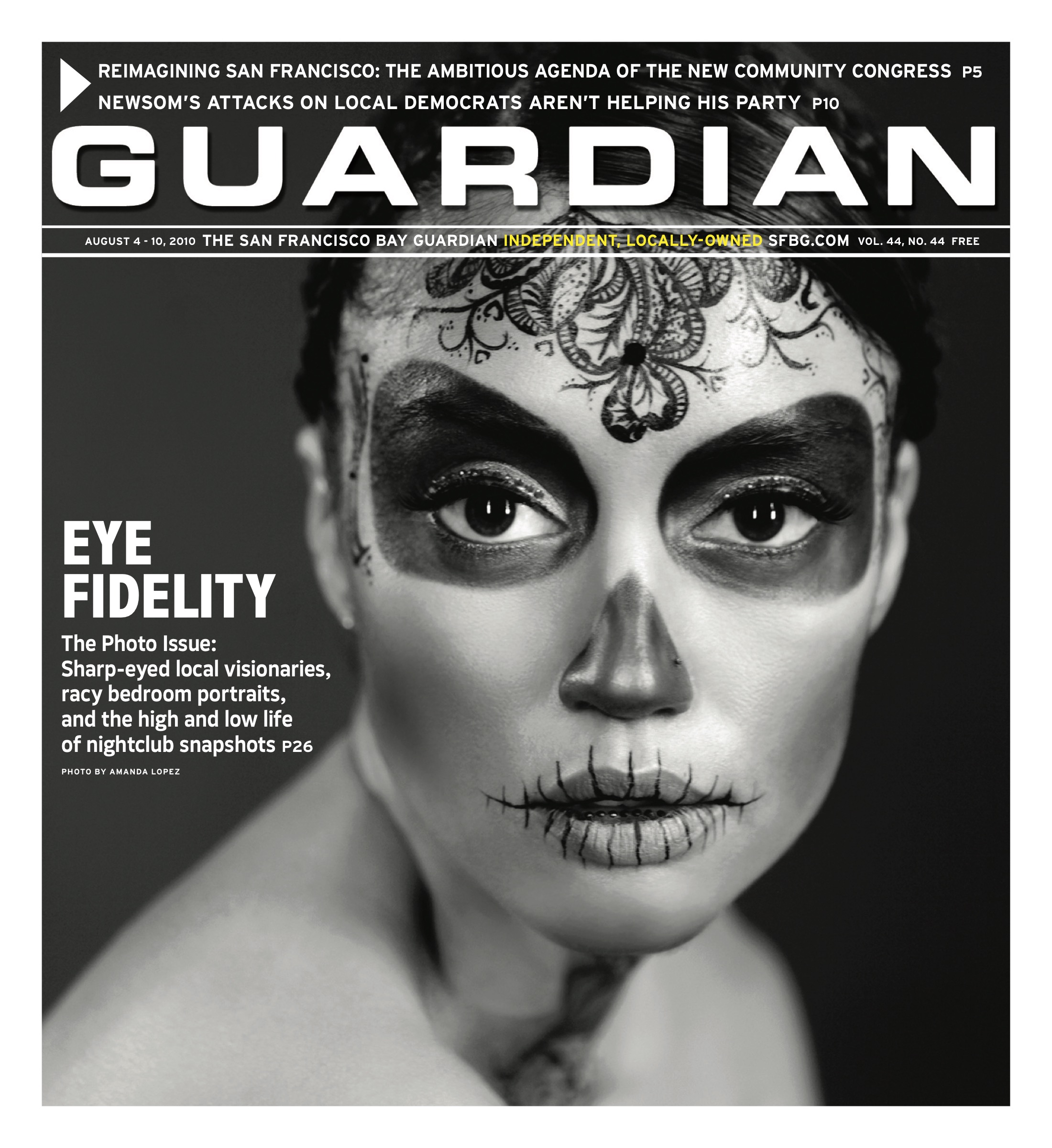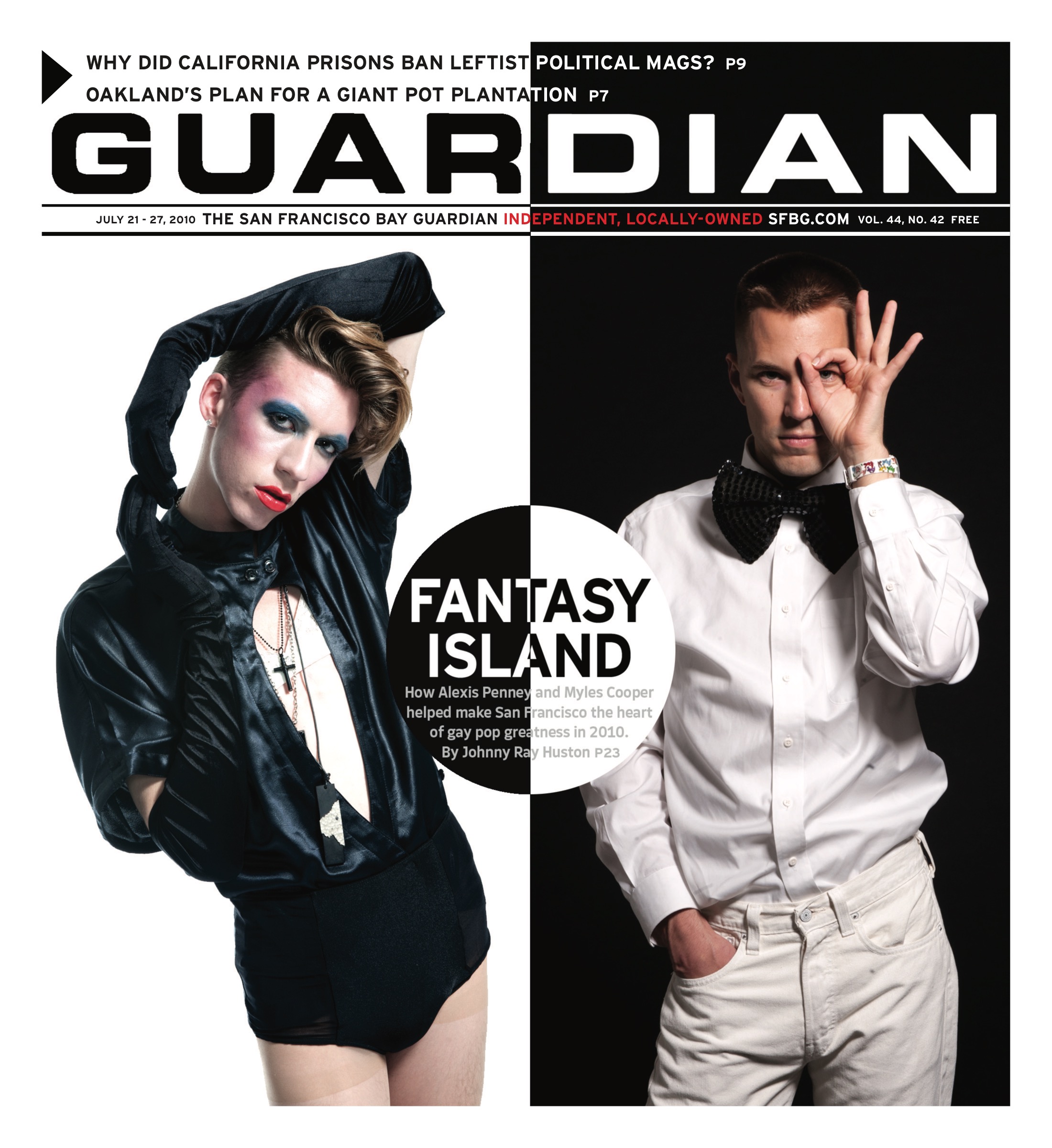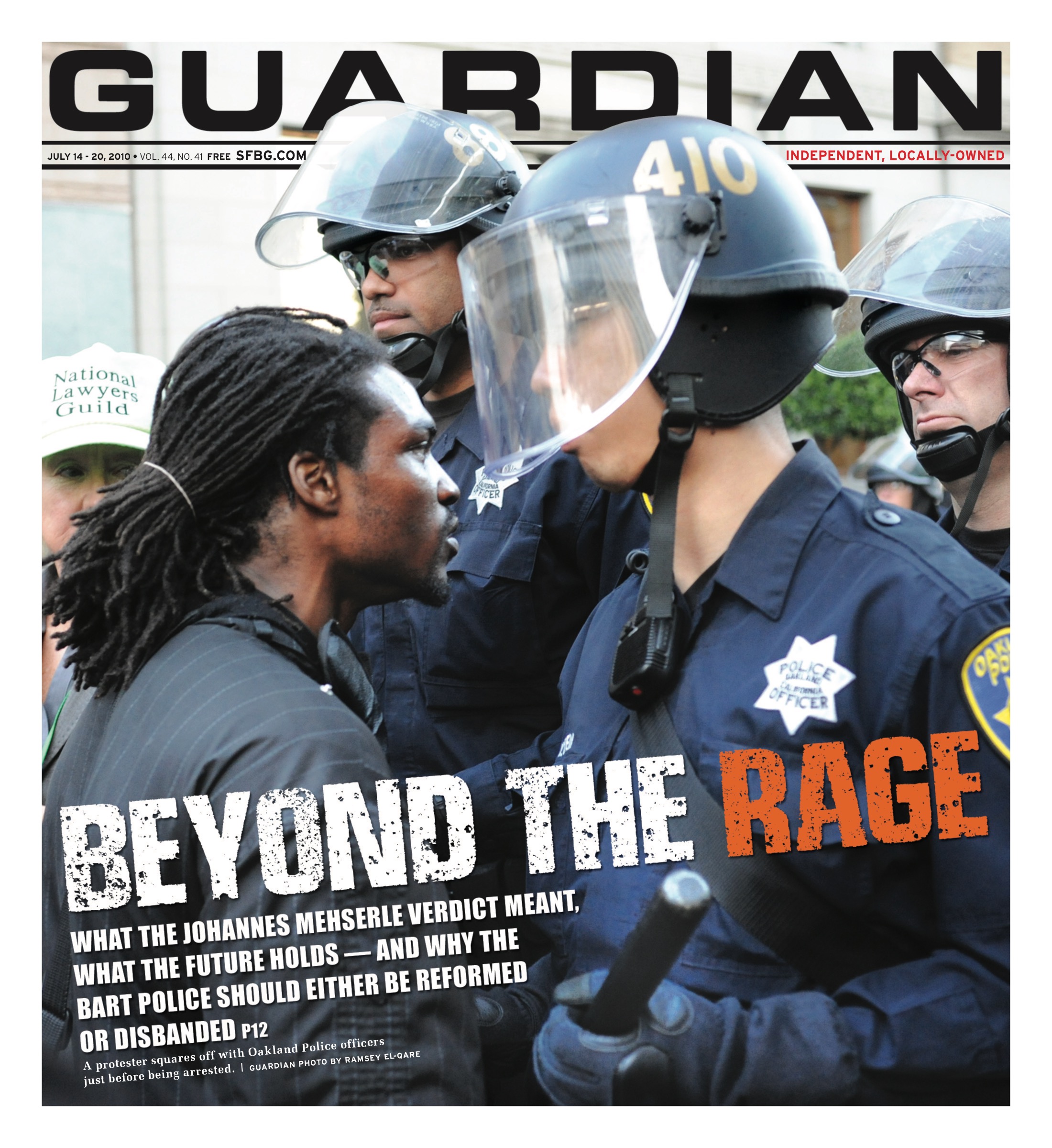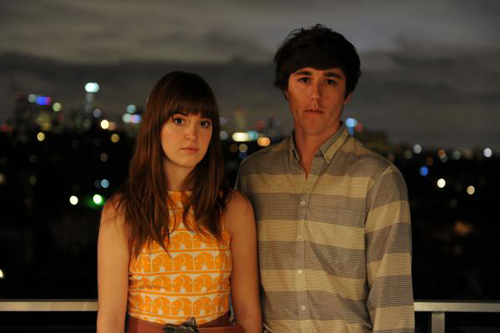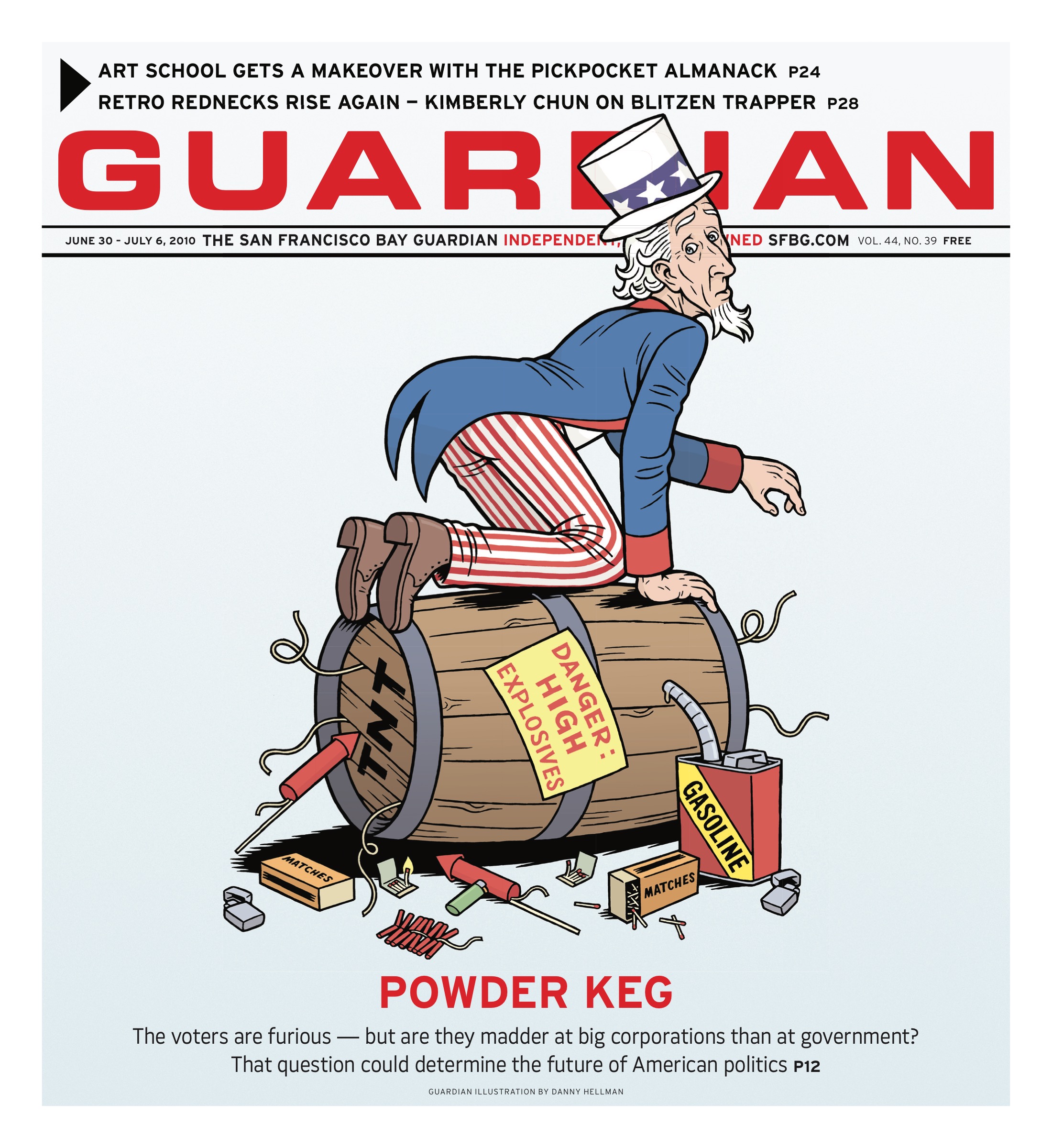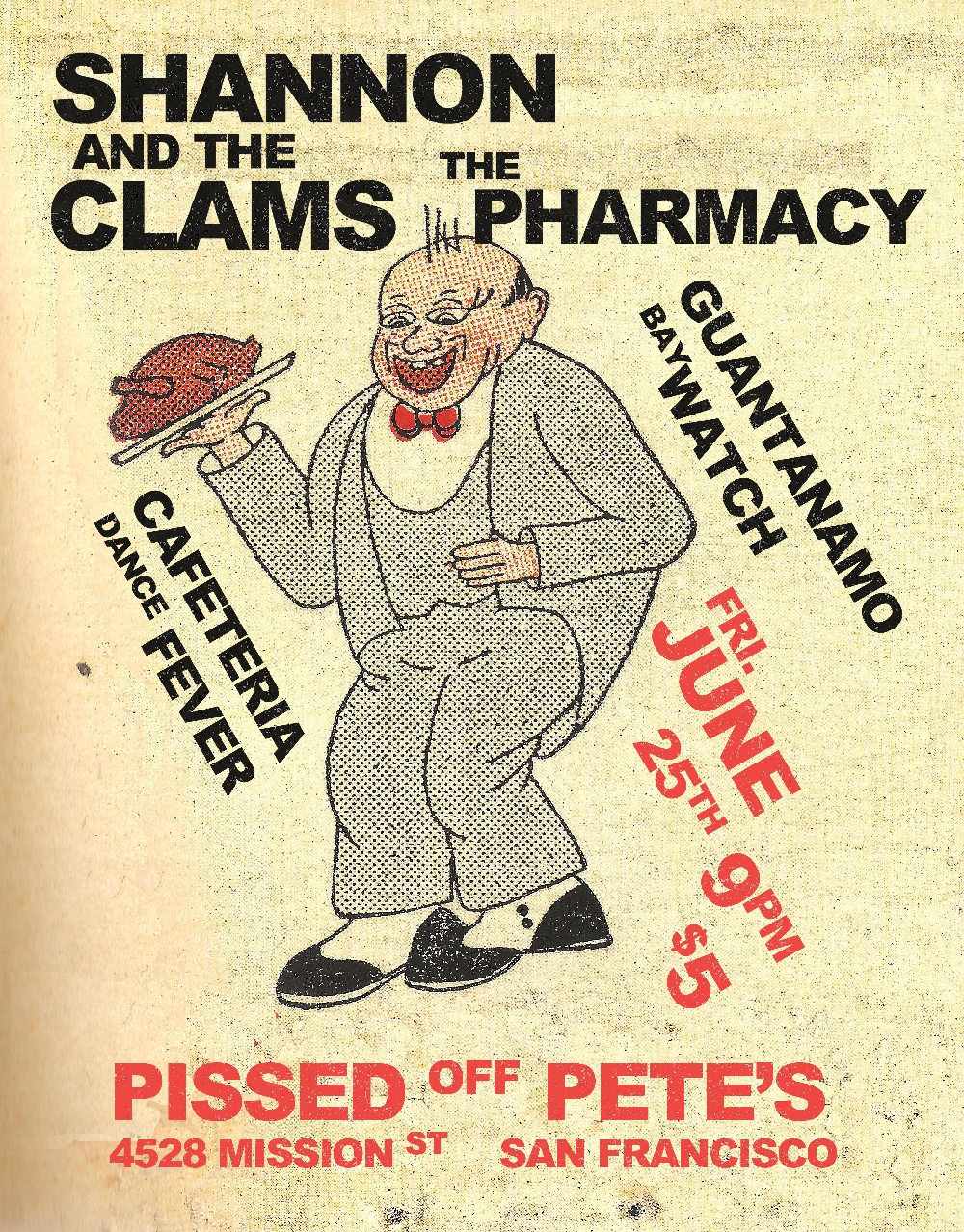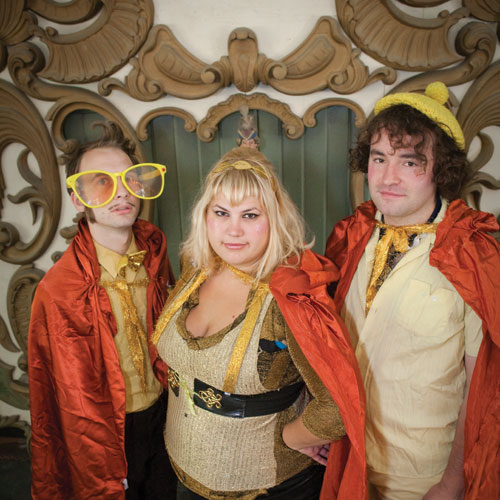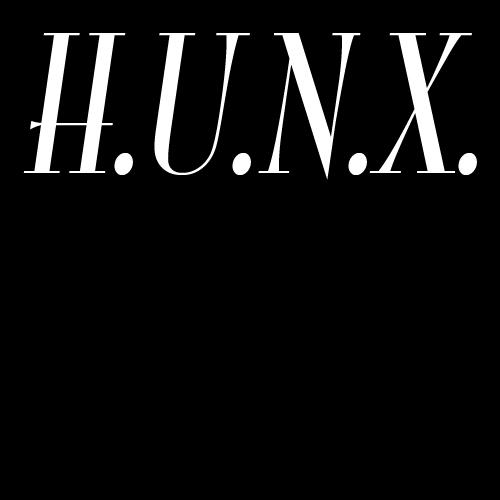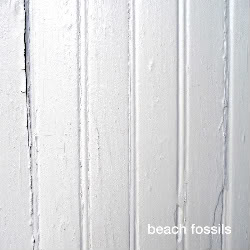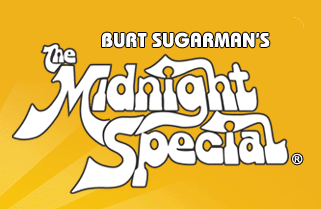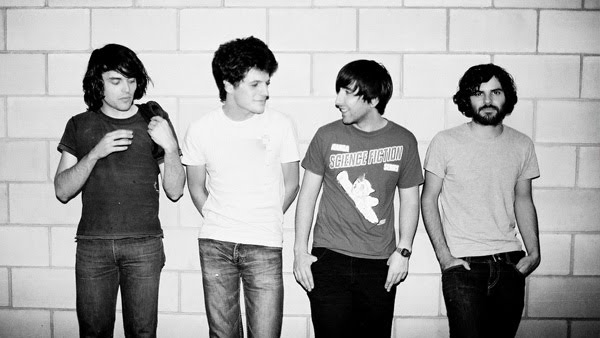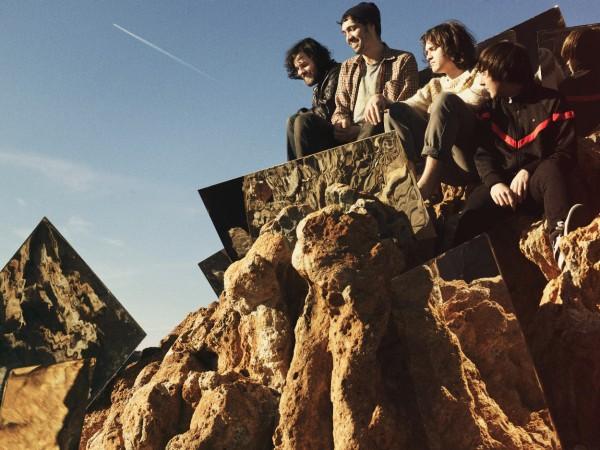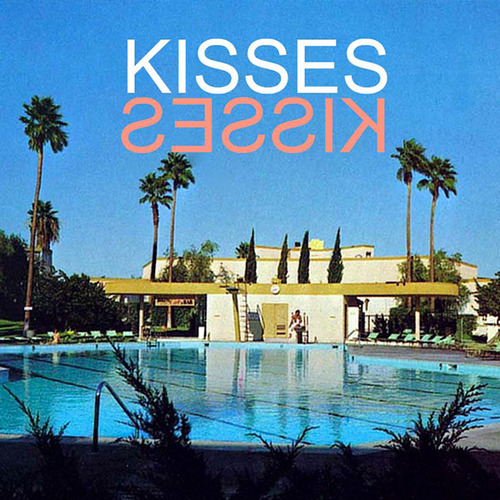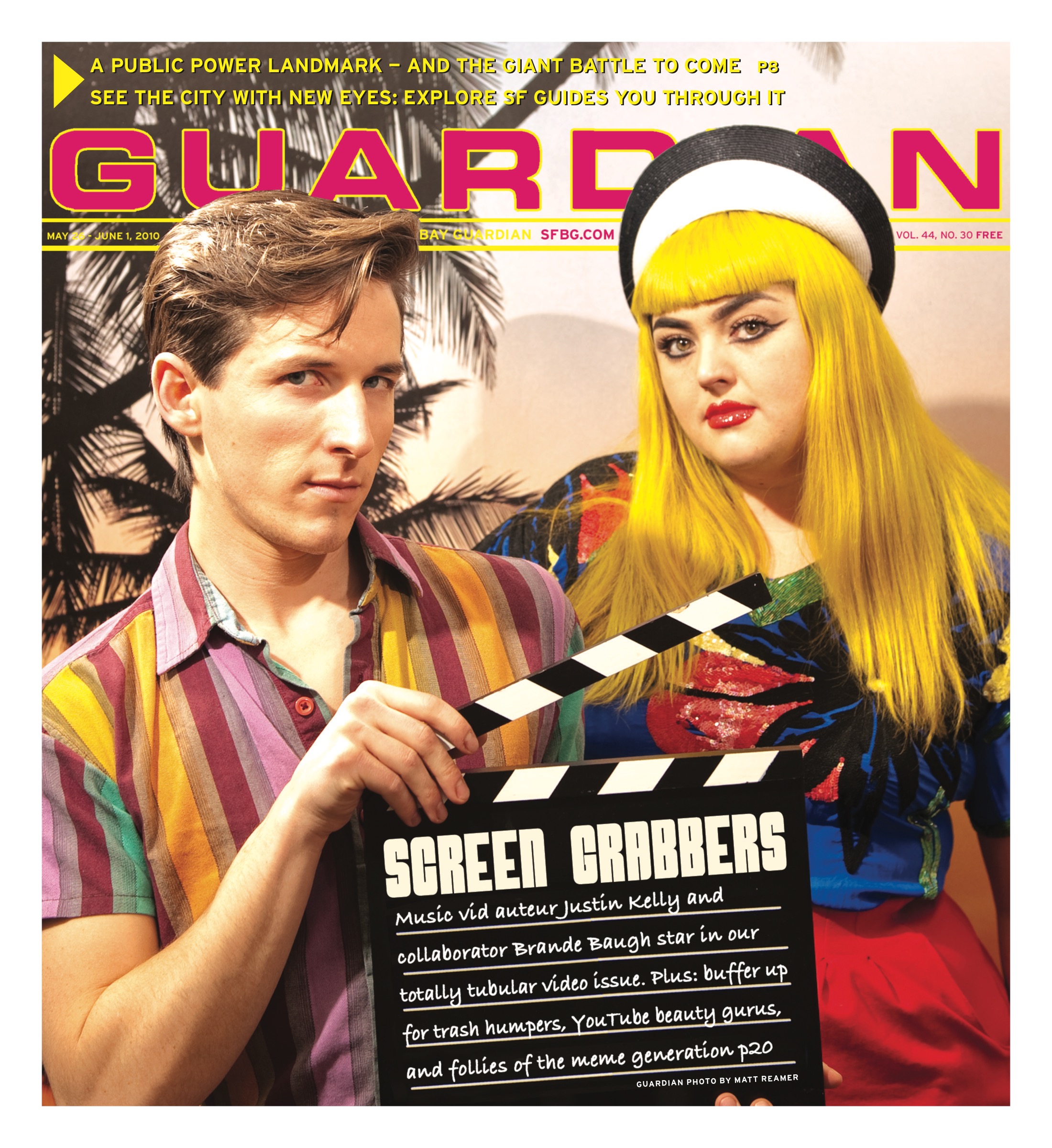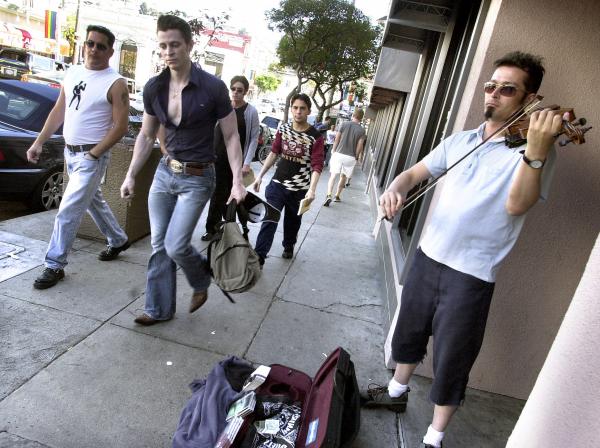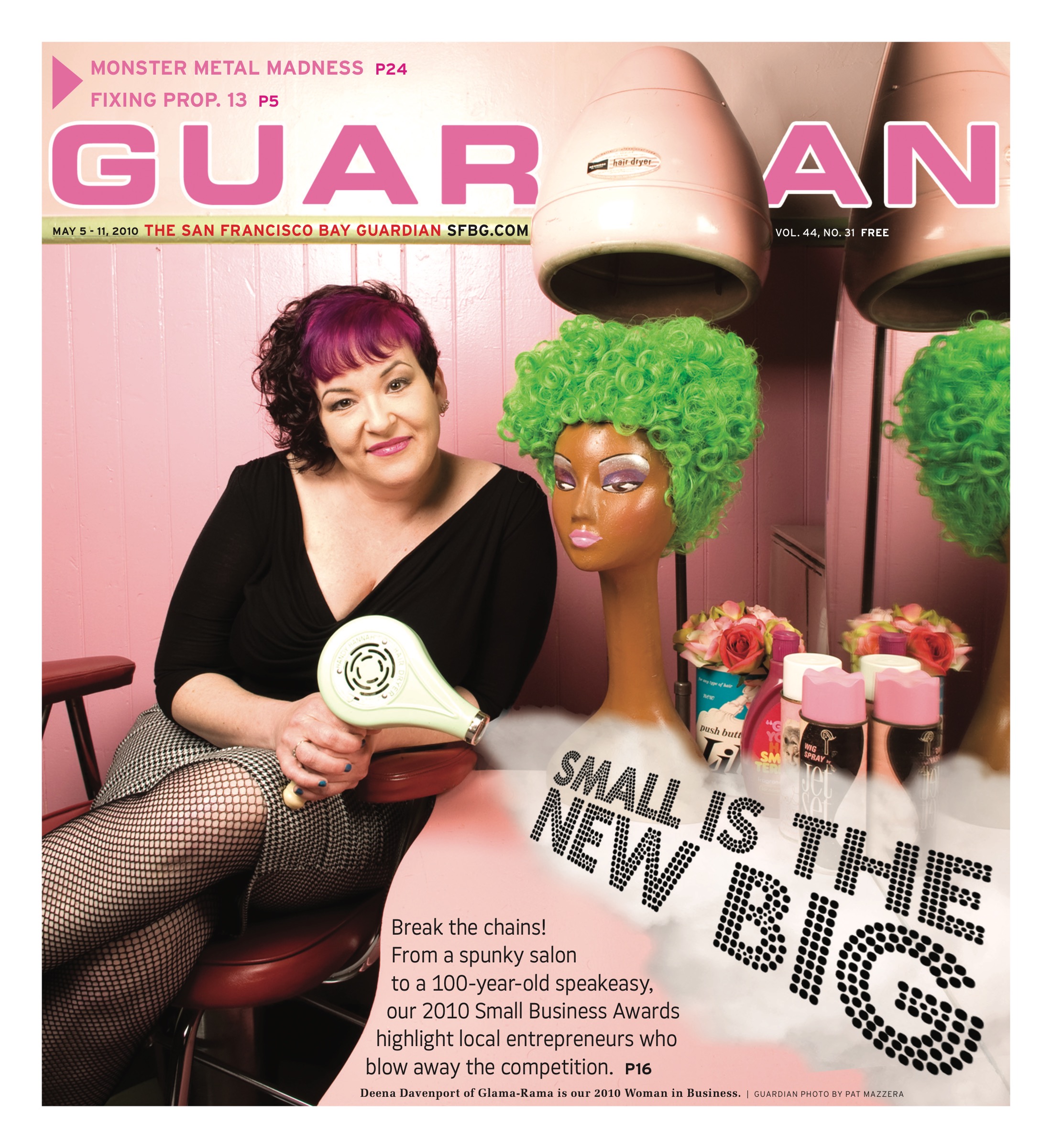A window in Sean Smith’s apartment looks across the street at the park. To the left of this window, inside the room, there’s an old sign that says Undertaker.
Smith is the kind of devoted undertaker who finishes what he starts. He’s a reverse undertaker: the kind that brings things to life, instead of escorting them through death. In recent years, he’s released solo albums of instrumental guitar music, and he’s also put together a pair of compilations devoted to guitarists of the Bay Area. Smith’s dedication to the instrument and its myriad possibilities isn’t selfish. Through 2006’s Berkeley Guitar and this year’s Beyond Berkeley Guitar (Tompkins Square), he’s helping to shine a light on fellow talents like Ava Mendoza, whose new album Shadow Stories (Resipiscent) can turn from Sonny Sharrock-caliber noise to skipping melody at the drop of a dime.
Smith’s own musical ability is vast and alive. He recently finished recording an impressive pair of albums with Tim Green. At a time when designer reissue labels like Numero Group are spotlighting guitar instrumentals, there should be room on a label of note for Smith’s commanding new albums, which stretch from solo interiors to epic band sounds while maintaining the same purity and high intensity. This week, at the Mission Creek Music Festival, Smith will emphasize his quieter, solo side. I recently talked with him about music.
SFBG Sacred Crag Dancer, Corpse Whisperer (Iota, 2006) veers toward improvisation, while Eternal (Strange Attractors, 2007) has more of an ensemble quality. How was putting them together different?
SEAN SMITH I had a lot of energy towards improvisation at the of Sacred Crag Dancer. My dad bought me a guitar. He’d been wanting to contribute for a while. I found one I wanted and he bought it for me and as soon as I got it I went home and would hit ‘Record” and play. I recorded 3 hours of music and pared it down to 34 minutes.
SFBG What was the process of paring it down like?
SS It was easy. We were quick to hear what worked and what didn’t work in the improv. It’s more like spontaneous composition. I’d try to repeat things or make compositions, cohesive journeys from A to B, rather than fuck around.
There were three levels of editing: first, there’s immediate editing while you’re playing, when you just stop and say “This sucks”; second, there’s determining what works and what doesn’t; and third, determining what works to make a cohesive album that reflects the span of the work.
SFBG In terms of coming up with titles, you’re different from some instrumental artists, who will keep things stark. Some people will pour all their heart into a work and then leave it untitled. Your titles are striking, not throwaway.
SS Well, I hope none of my work is throwaway.
There’s a lot of variation and possibility in titling. You might have your own idea that you start with before the music comes to you.
With Sacred Crag Dancer, the music came first, it was sprouting forth from nothing, and titles had to be created to fit it.
“Extrance” is an exit and entrance — you’re leaving your world and entering a world where the character (of the album) dictates your experience.
SFBG There is a lot of deathly imagery in that album’s titles.
SS “Sacred Crag Dancer, Corpse Whisperer” comes from something I thought I heard Daniel Higgs say one time when I saw him play. The energy of the album was definitely inspired in part by him. I was moving in that [improvisational] direction and then I saw him play for the first time and everything just shifted.
It seems like each of my albums has a character creating the environment. The Sacred Crag Dancer Corpse Whisperer is a conjurer of a weird spiritual realm.
The title “Some Men Are Born Posthumously” is a line from Nietzsche. He was talking about how no one would understand his work during his lifetime.
SFBG I like “Jeweled Escapement.”
SS I’m sure as a journalist you have typed on a typewriter — my typewriter’s escapement key has a jewel on it. All the titles of the album are typed on that typewriter.
FBG Making the kind of music you’re making, which isn’t tied to a particular trend, I figure you probably get responses from all kinds of people —
SS Or nobody.
SFBG Yes. In a sense doing the Berkeley Guitar and Beyond Berkeley Guitar compilations is work on your part to counter that lack of a profile, and perhaps hint at a movement. It’s almost like journalism in a way.
SS It’s been a general problem in the world of solo guitar that most of the people in that world squander their talents in obscurity.
Some people who end up on these collections won’t necessarily do anything else. Adam Snyder (from Berkeley Guitar) is a brilliant musician. He’s written hours and hours and hours and hours of music. He’s obsessed. When we lived together he couldn’t hold a job because all he wanted to was be at home playing. Yet he hasn’t made a record. I don’t know if he ever will, but I’m sure he’s still obsessively playing music.
I’m more into documenting music.
SFBG Do you like Harry Smith?
SS Yes. My mentality stems from that, from thinking, “Wow, thanks to this guy, we have all of this music,” a document of a time, of people, and of culture. If it wasn’t for him, those songs would have remained on back porches. He was able to capture something so the rest of the world could hear.
SFBG It’s a generative thing.
SS And the music becomes more generous to the listeners in the process. It becomes potentially influential.
SFBG What has it been like to work with Tim Green?
SS Great. He doesn’t say a damn thing unless it’s really important, so when he does, it means something.
I’m bummed that the (Fucking) Champs disbanded — that music is like from my dreams or something, instrumental music that powerful. With music like that, no one ever says, “When are you going to start singing?” I haven’t gotten there yet — people still ask me.
This newer music I recorded with Tim is being met with a lot of confusion. Eternal was, too. People are like, “Wait, it’s not solo guitar, but it’s instrumental, and there’s solo guitar and crazy electric guitar on it.” It doesn’t fit neatly into that finger picking American primitive thing.
SFBG Will you always be shifting in relation to that sort of traditionalism?
SS Absolutely. There’s no one way for me. There never has been.
The finger picking or instrumental thing has just been a means of expression.
When I was in 4th grade, I wanted to play saxophone, really badly. They wouldn’t let me, they wanted me to play clarinet. I tried it out for a couple of weeks and didn’t like the tone of it. But I always say that if they’d have let me play the saxophone, I’d probably be a saxophone player right now.
When I found the guitar, I realized I could express myself with it. If I didn’t have a guitar I would find a way to express myself. I’m not just in some pop band. I’m never going to break up with myself. I’m always going to be making music because I’m compelled to.
I particularly don’t want to write lyrics. I’m not interested in singing, because that’s not my instrument. The guitar is my instrument and I struggle enough with that, trying to progress and expand and play authentically.
That’s a huge part of music, too — playing authentically, playing genuinely.
SFBG Figuring that out when making music is difficult. There are different challenges that sort of have to converge. There’s the struggle to make music that to you — to your hearing and intuition — sounds good so that you like it. And at the same time, you have to do that without killing it by trying to make it too good. You have to allow it to be alive.
SS A lot of that is lost simply due to the ways in which things are recorded today.
Everything is AutoTuned. Now, in pop music if it isn’t AutoTuned, people are thrown off by it.
Even more intensely, when it comes to playing honestly, my song on Beyond Berkeley Guitar is called “Ourselves When We Are Real.” That comes from Mingus’ solo piano album [Mingus Plays Piano, 1963] — the first song on it is called “Myself When I Am Real.” When I heard it, it was so disturbing, because it’s so honest. It sounds like all these little thoughts in your head, your inner monologue mixing with the outside world, the way you look at yourself in the mirror and the way your voice sounds.
I wanted to shift that title, and I wanted to call [the composition] that because it was the most authentic piece of music that I had ever written.
SFBG Is that what you were striving for with Tim Green?
SS It’s your own process. He’s not interested in telling you what to do. His question is, “What are we doing today?”
He has tons of old funky gear to work with. He prefers to record to tape, and so do I. He sleeps until around 1 in the afternoon. You never start before 2 or 3 p.m. He likes to go late, and he’s the most patient person in the world.
For the most part, if I don’t get something by the second take I move on, because I don’t want to do it to death. But there was one time when I was playing a guitar line, and I realized I’d been playing it for two hours trying to get it right, and it was making me crazy. Tim was sitting there reading a magazine and never getting frustrated. He’d say, “That one sounded alright — do it again.” He was hearing things.
There’s a drawing in the studio that someone did of Tim sitting at the board. He’s always got a leg kicked out with his black Samba Adidas, and he’s drawn so that he has these huge elephant ears.
SFBG Have you listened to (the Numero Group compilation) Guitar Soli?
SS I haven’t heard it yet. I looked at the track listing and was vaguely familiar with most of the people on it. Even though it’s super obscure I’ve spent the last ten years of my life digging around for solo guitar records. I play a George Cromarty tune, “Topinambour.” Eternal starts with it.
SFBG There are a fair amount of reissues connected to solo guitar as of late — people like Sandy Bull are getting a new surge of attention.
SS This is the age of reissues and revisiting.
I’m in a Black Sabbath cover band with three members of Citay. I find it’s probably the most rewarding band I’ve ever played in. A friend was saying that a cover band now isn’t like this 1986 cruise ship playing Top 40 hits now, it’s a legitimate type of music.
SFBG This might be overstating, but maybe it’s like a spiritual pursuit. If you decide you’re going to cover Sabbath, you know you’re going to go deep into Sabbath.
SS For me, I want to play in a relevant way, so I want to bring the experience of seeing Black Sabbath at their prime to the audience.
SFBG What’s the band called?
SS It’s called Bob Saget.
SEAN SMITH
as part of the Mission Creek Music Festival
with Howlin Rain, 3 Leafs, DJ Neil Martinson
Sat/17, 9 p.m., $8
El Rio
3158 Mission, SF
(415) 282-3325
www.mcmf.org

